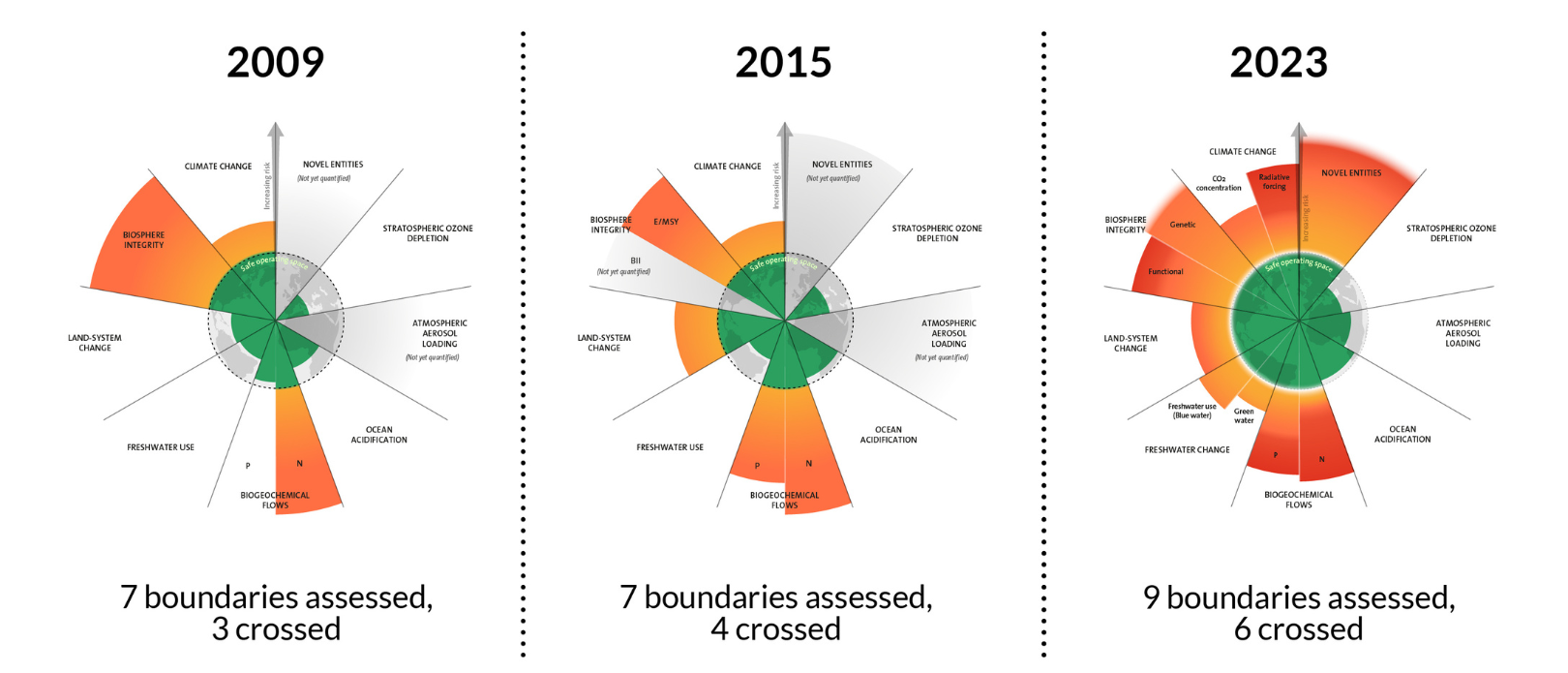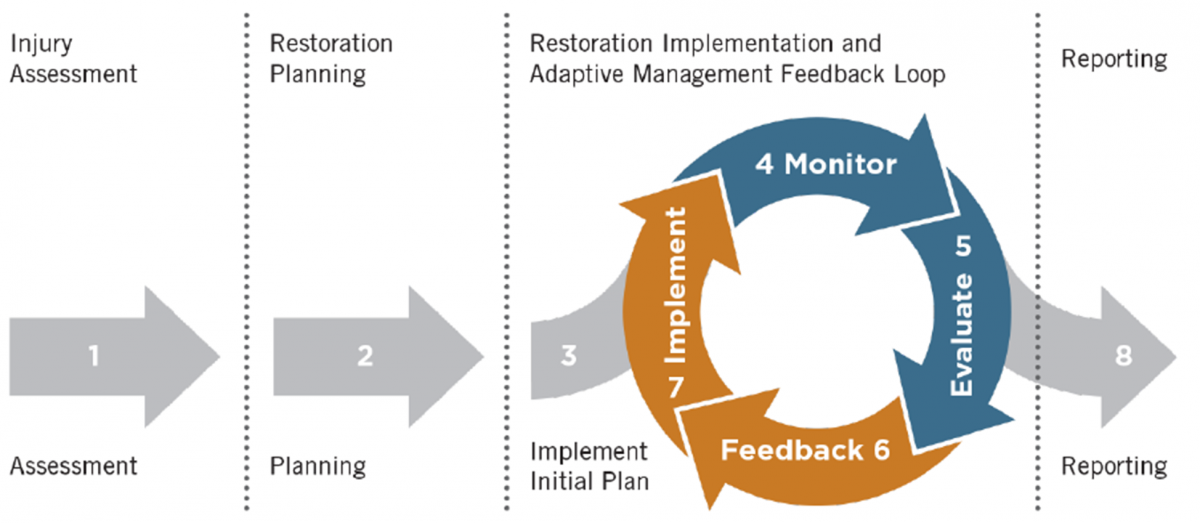IB Syllabus focus:
‘Conserve and regenerate biodiversity at individual to international scales to stay within planetary boundaries; assess projects on outcomes, community reception, and whether approaches were the best option.’
Biodiversity regeneration involves repairing damaged ecosystems while ensuring sustainability. Strategies operate at multiple scales, from local initiatives to international treaties, and require careful evaluation for long-term success.
Regeneration Measures
Individual and Community Scale
At the smallest scale, regeneration measures begin with individual actions and community projects. These may include:
Tree planting initiatives to restore degraded landscapes.
Urban greening through community gardens, green roofs, and pollinator-friendly spaces.
Citizen science programmes that contribute to biodiversity monitoring.
Sustainable consumption practices, such as reducing meat consumption, supporting sustainable fisheries, and minimising plastic waste.
Such actions often raise awareness and foster environmental stewardship, creating momentum for broader change.
National Scale
At the national level, governments play a central role by implementing legislation and policies to conserve and regenerate biodiversity. Examples include:
Protected area designation, such as national parks and nature reserves.
Environmental regulations to control pollution and prevent overexploitation.
Agri-environment schemes encouraging farmers to maintain hedgerows, reduce pesticide use, and protect wetlands.
Species recovery programmes, which may involve captive breeding, reintroduction, or habitat restoration.
These measures depend on political will, financial resources, and collaboration between government agencies, NGOs, and local communities.
International Scale
Because ecosystems often transcend political boundaries, international cooperation is critical. Key approaches include:
Global treaties, such as the Convention on Biological Diversity (CBD), which sets targets for biodiversity conservation.
Transboundary conservation areas, where neighbouring nations cooperate to manage ecosystems like mountain ranges or river basins.
Global restoration initiatives, such as the Bonn Challenge, aiming to restore millions of hectares of degraded land worldwide.
Marine protected areas beyond national jurisdiction, vital for safeguarding biodiversity in international waters.
International measures are challenging to implement but provide a framework for collective responsibility.
Staying Within Planetary Boundaries
The concept of planetary boundaries identifies ecological thresholds beyond which Earth’s systems risk destabilisation.

This illustration summarises the nine planetary boundaries and indicates which are currently transgressed, situating biodiversity regeneration within a global safe-operating-space framework. It supports the syllabus requirement to link regeneration to planetary limits. The graphic includes extra detail (all nine processes and their status), which extends beyond the immediate subsubtopic but provides essential context. Source.
Biodiversity loss is a critical boundary, as ecosystems provide services such as pollination, water purification, and climate regulation. Regeneration measures aim to:
Halt biodiversity decline.
Restore degraded ecosystems to functional states.
Ensure sustainable use of resources to avoid exceeding ecological limits.
By focusing on regeneration, societies contribute to resilience against global challenges like climate change and food insecurity.
Evaluating Success of Regeneration Projects
Outcome-Based Assessment
The first stage in evaluating success involves measuring ecological outcomes. These include:
Population recovery of threatened species.
Increased habitat area and quality.
Improved ecosystem services, such as water retention or carbon sequestration.
Biodiversity indicators, such as species richness or abundance, showing positive trends.
Such outcomes must be tracked over time to determine whether projects achieve lasting impacts.
Community Reception
Projects also depend on social acceptance. Without local community support, conservation and regeneration efforts may face resistance or even fail. Key indicators of successful reception include:
Community involvement in planning and implementation.
Perceived benefits, such as employment through ecotourism or improved quality of life from restored green spaces.
Equity considerations, ensuring marginalised groups share in the benefits and are not disproportionately burdened.
This recognition highlights the importance of environmental justice in regeneration.
Was It the Best Option?
A crucial part of evaluation is asking whether the chosen approach was the most effective. Considerations include:
Cost-effectiveness: Were resources used efficiently?
Alternative strategies: Could other measures have achieved greater or faster results?
Scalability: Can the project be replicated in other regions or ecosystems?
Unintended consequences: Did actions inadvertently harm other species, displace local people, or increase vulnerability to invasives?
This reflection ensures adaptive management, where strategies are improved through learning.

The diagram shows an adaptive management process for restoration, highlighting iterative monitoring, evaluation, feedback, and adjustment. It illustrates how project outcomes inform decisions about whether interventions were the best option. The labelled phases match the evaluation emphasis in this subsubtopic. Source.
Examples of Regeneration Measures
To illustrate the variety of approaches, regeneration measures may include:
Wetland restoration to enhance flood control, biodiversity, and carbon storage.
Reforestation and afforestation, especially with native species, to rebuild ecosystems.
Coral reef restoration through artificial structures or transplantation.

This photograph depicts outplanting—attaching nursery-grown corals to reef substrate, a common restoration technique to accelerate reef recovery. It exemplifies a tangible regeneration measure that can be evaluated for survival rates, cost-effectiveness, and scalability. The page includes additional programme details not required by the syllabus; the image itself focuses on the technique. Source.
Rewilding projects, which reintroduce species such as apex predators to restore ecosystem dynamics.
These approaches highlight the diversity of tools available for biodiversity recovery, each suited to specific ecological and social contexts.
Importance of Multi-Scale Collaboration
Effective regeneration requires collaboration across scales:
Local communities provide traditional knowledge and on-the-ground action.
National governments supply funding, legislation, and coordination.
International organisations create frameworks and mobilise global resources.
Such collaboration ensures that regeneration measures are comprehensive, equitable, and sustainable.
FAQ
Projects often fail when they lack long-term funding, clear goals, or community support. Without consistent monitoring, ecological gains may be temporary.
Additionally, external pressures such as climate change, invasive species, or pollution can undermine restoration efforts. Social factors like land disputes or ignoring local knowledge can also reduce success.
Community involvement is assessed by the extent to which local people:
Participate in decision-making and planning.
Gain employment or economic benefits.
Adopt new practices that support conservation.
Surveys, interviews, and participation records help determine the level of acceptance and support, which are critical for long-term sustainability.
Ecological change often occurs slowly, so immediate results can be misleading. Short-term gains in vegetation or wildlife numbers may not reflect long-term resilience.
Long-term monitoring helps identify whether positive outcomes persist, adapt to new challenges, and confirm that regeneration is progressing towards ecosystem stability.
Cost-effectiveness ensures limited resources are used where they achieve the greatest ecological and social benefit. Expensive projects that yield small gains may not be justified.
Comparing cost per hectare restored, survival rates of species, or benefits delivered helps decision-makers select the most efficient strategies while balancing community needs.
Yes, poorly designed interventions can cause harm. For example, planting non-native species may displace local biodiversity, while fencing reserves may restrict community access to resources.
Unintended consequences highlight the need for adaptive management, where ongoing evaluation allows changes to be made to minimise risks and maximise benefits.
Practice Questions
Question 1 (2 marks)
State two ways in which biodiversity regeneration helps societies remain within planetary boundaries.
Mark scheme:
1 mark for identifying each correct way, up to a maximum of 2 marks.
Possible answers include:
Preventing biodiversity loss as a critical planetary boundary.
Maintaining ecosystem services such as pollination, water purification, or carbon storage.
Enhancing ecosystem resilience to climate change and other global challenges.
Restoring degraded ecosystems to functional states.
Question 2 (5 marks)
Explain how the success of biodiversity regeneration projects can be evaluated. Use examples of both ecological and social criteria in your answer.
Mark scheme:
1 mark for mentioning ecological outcomes (e.g., species population recovery, improved ecosystem services, increased habitat area).
1 mark for mentioning biodiversity indicators (e.g., species richness, abundance).
1 mark for mentioning social acceptance/community involvement (e.g., employment through ecotourism, improved quality of life, equity considerations).
1 mark for discussing the importance of considering whether the project was the best option (e.g., cost-effectiveness, scalability, unintended consequences).
1 mark for explaining that evaluation requires long-term monitoring and adaptive management.
Maximum: 5 marks.

